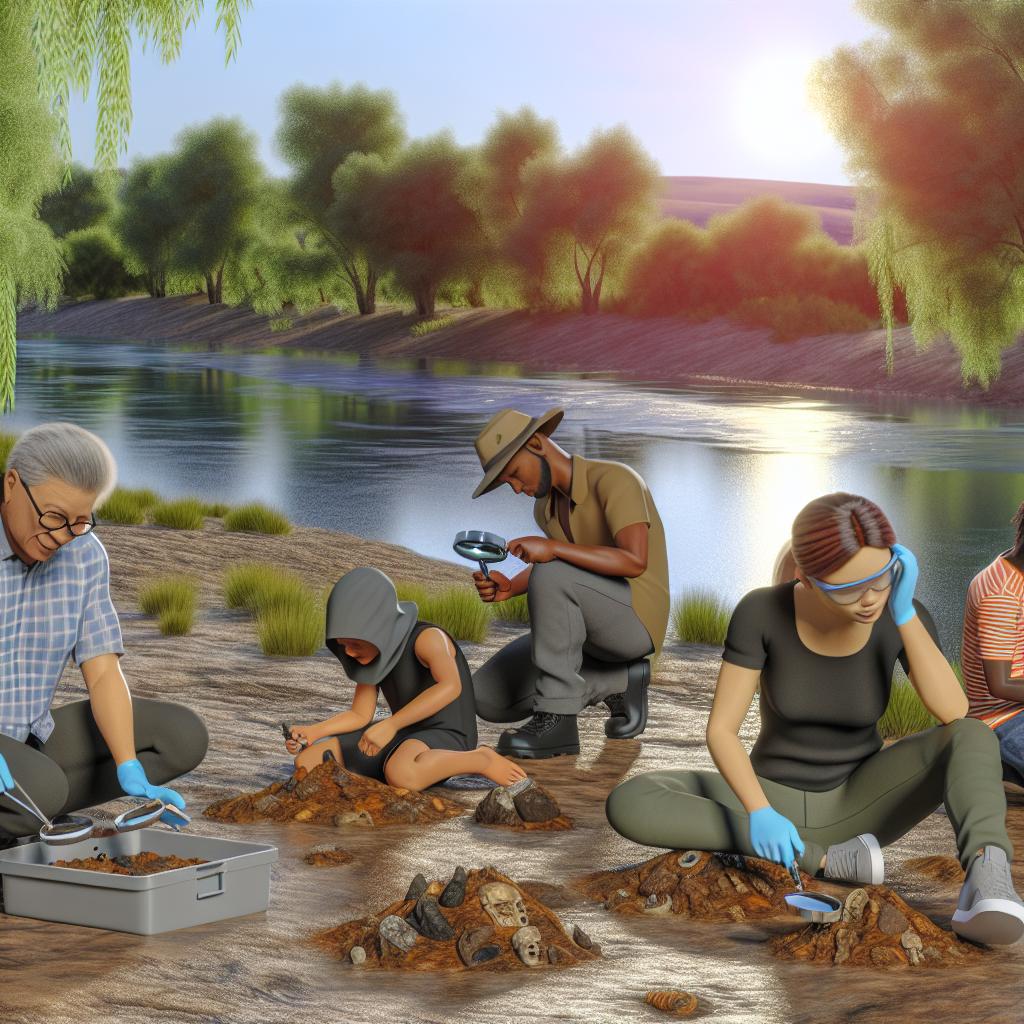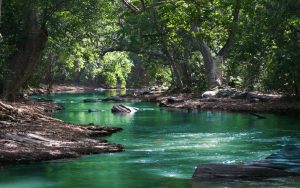Guide to Fort Ogden, Florida
Fossil Hunting on the Peace River

Overview of the Peace River
The Peace River, located in the state of Florida, USA, stands out as a significant destination for fossil enthusiasts. Stretching over approximately 106 miles, it originates from Bartow and finds its way to the Gulf of Mexico near Fort Myers. The river’s fame stems from its abundant fossil deposits, which are a direct result of the region’s extensive geological history. The constant erosion of the riverbed reveals a diverse range of fossils that stretch back millions of years, offering insights into the Miocene and Pleistocene epochs.
The Peace River showcases a remarkable timeline of natural history. Over the ages, the river has carved through layers of sedimentary deposits, each unveiling secrets of the Earth’s past. Geological transitions have occurred as landmasses shifted and sea levels changed, leading to the accumulation of various sediments. This array of sediments carried with them the remains of marine and terrestrial life, creating a rich repository of fossils.
Types of Fossils Found
A visit to the Peace River opens up possibilities to discover a diversity of marine and terrestrial fossils. Among the most sought-after are the remnants of extinct species like the megalodon shark, whose gigantic teeth provide a glimpse into the ocean’s prehistoric predators. In addition, fossil hunters can unearth dugong rib bones and mammoth molars, which speak volumes about the river’s ancient inhabitants.
Moreover, the Peace River is host to fossils from various creatures that roamed its surroundings in bygone eras. Ancient horse and tapir fossils are not uncommon, highlighting a land where these creatures once thrived. Marine fossils such as stingray dental plates also tell tales of a vibrant aquatic ecosystem.
Preparation for Fossil Hunting
Embarking on a fossil hunting expedition along the Peace River requires meticulous preparation. The river’s water levels are subject to seasonal fluctuations, making the dry season, spanning from November to May, the optimal time for exploration. During this period, the river becomes more accessible, and fossil hunters find ideal conditions to uncover hidden treasures.
Essential tools are an indispensable part of a successful fossil hunting trip. The basics include a sifter and shovel, which serve to separate fossils from sediment. Proper attire, such as water shoes and gloves, ensures safety and comfort while navigating the river’s environment. Equally important is understanding and adhering to local laws and guidelines. Planning ahead to check local regulations and secure necessary permits is prudent, as fossil hunting may be restricted in certain areas.
Legal Considerations
In Florida, fossil hunting on state-owned lands is subject to regulations to ensure the protection of significant finds. Those interested in collecting vertebrate fossils are required to obtain a Fossil Permit, issued by the Florida Museum of Natural History. This regulatory measure ensures that fossil hunting is conducted responsibly, preserving Florida’s paleontological heritage.
Respecting private property is equally crucial when fossil hunting. Permission from landowners should be sought before accessing any privately owned zones. The compliance with such legalities demonstrates a commitment to ethical fossil collection, allowing the continuation of this intriguing hobby. For further details regarding the Fossil Permit, enthusiasts can visit the Florida Museum of Natural History website.
Conservation and Responsible Collecting
Practicing responsibility and conservation in fossil hunting is vital. Both professionals and hobbyists share the duty of ensuring minimal impact on the environment. Preserving the natural state of the fossil sites is a priority, which involves avoiding unnecessary disruption of large areas and being mindful of local wildlife habitats.
By documenting significant finds, fossil hunters contribute valuable information to the scientific community. If notable discoveries are made, it is advisable to report them to local museums or academic institutions. Such contributions can enhance the understanding of paleoecology and the historical narratives of Earth’s past.
In summary, the Peace River offers a captivating journey into Florida’s deep history, where fossil hunting brings forth opportunities for discovery and learning about ancient life. The incorporation of careful planning, environmental respect, and legal adherence ensures that this activity remains both educational and fulfilling. Through conscious effort, fossil hunting on the Peace River continues to be a rewarding endeavor for all who seek to uncover the wonders of the prehistoric world.



